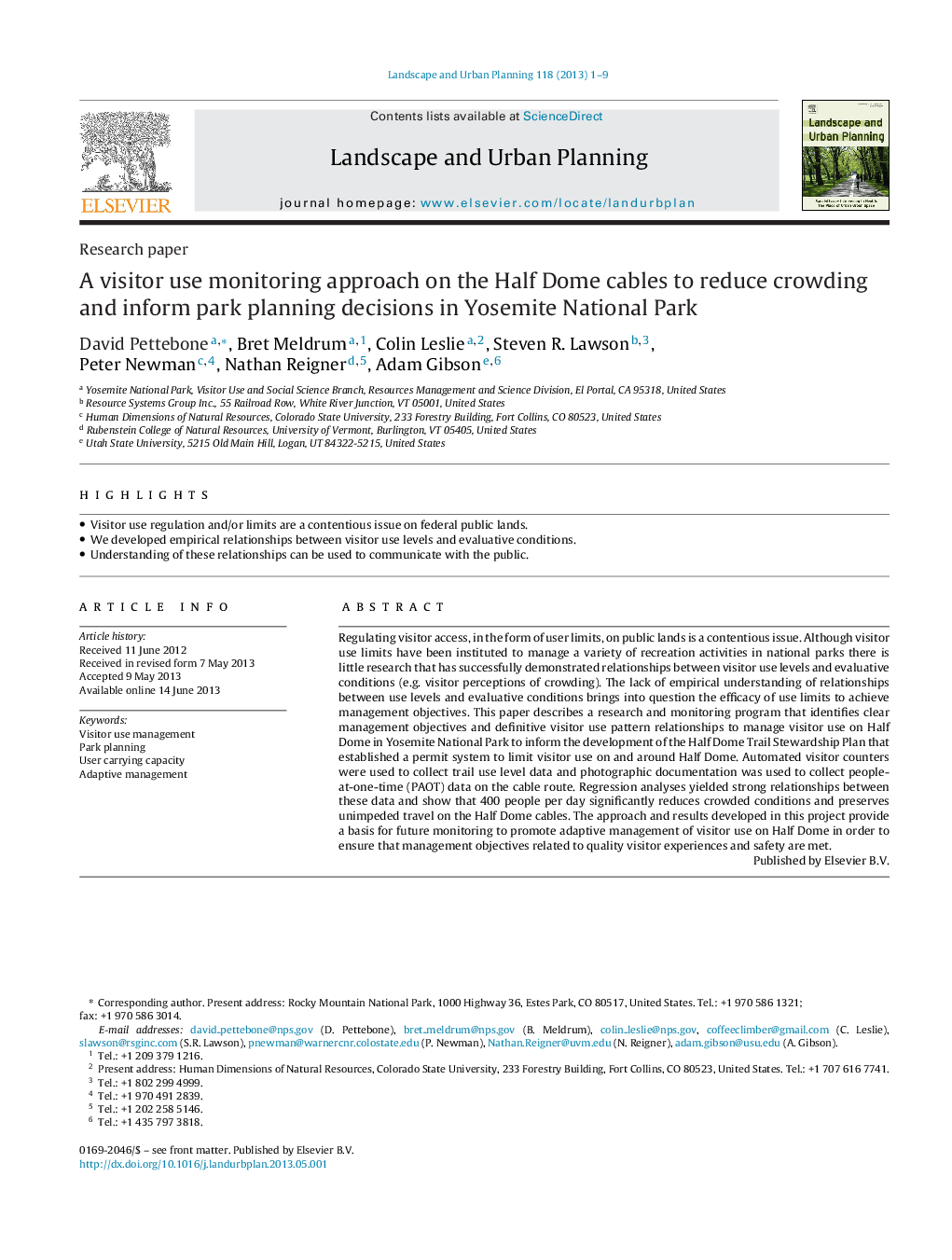| Article ID | Journal | Published Year | Pages | File Type |
|---|---|---|---|---|
| 7461853 | Landscape and Urban Planning | 2013 | 9 Pages |
Abstract
Regulating visitor access, in the form of user limits, on public lands is a contentious issue. Although visitor use limits have been instituted to manage a variety of recreation activities in national parks there is little research that has successfully demonstrated relationships between visitor use levels and evaluative conditions (e.g. visitor perceptions of crowding). The lack of empirical understanding of relationships between use levels and evaluative conditions brings into question the efficacy of use limits to achieve management objectives. This paper describes a research and monitoring program that identifies clear management objectives and definitive visitor use pattern relationships to manage visitor use on Half Dome in Yosemite National Park to inform the development of the Half Dome Trail Stewardship Plan that established a permit system to limit visitor use on and around Half Dome. Automated visitor counters were used to collect trail use level data and photographic documentation was used to collect people-at-one-time (PAOT) data on the cable route. Regression analyses yielded strong relationships between these data and show that 400 people per day significantly reduces crowded conditions and preserves unimpeded travel on the Half Dome cables. The approach and results developed in this project provide a basis for future monitoring to promote adaptive management of visitor use on Half Dome in order to ensure that management objectives related to quality visitor experiences and safety are met.
Keywords
Related Topics
Life Sciences
Agricultural and Biological Sciences
Ecology, Evolution, Behavior and Systematics
Authors
David Pettebone, Bret Meldrum, Colin Leslie, Steven R. Lawson, Peter Newman, Nathan Reigner, Adam Gibson,
